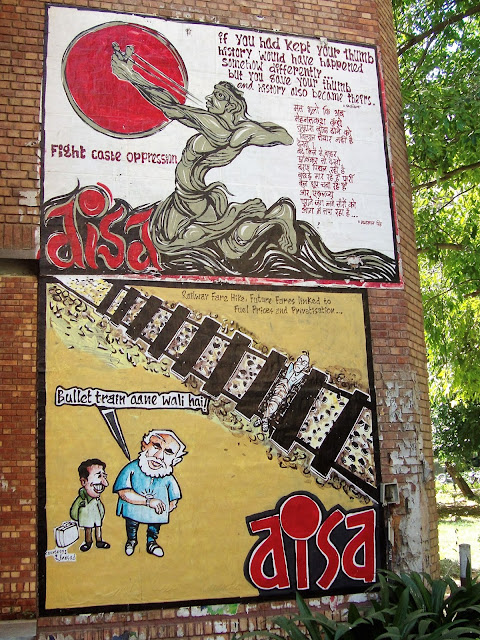I got an invitation to attend the European Day of Languages (EDL) held on 26 September 2015 at the Cyber Hub, Gurgaon.
The best performance of the day was the performance by Vasundhra Vidalur. First she sang couple of songs accompanied by Karim Ellaboudi on Piano. Later she was also joined by Marcello Allulli on Saxophone, Matteo Fraboni on drums and Bass by Saurabh Suman. She has an amazing voice and I wonder how come I have not heard her before. Her Jazz and Blues are really enthralling. It is a pity that as the programme was not publicised well and as her performance was at the end several people had left before her performance started. Watch a small video of their performance-
There should be more such programmes so that we can listen to the languages and see dance and culture of countries across the world.
Also read:
Sufi Music by Sabri Brothers
Wise Guys and the Maharaj Trio for the Butterflies
Sufi Dervish Dance
 |
| Karim Ellaboudi, Matteo Fabroni, Vasundhra, Marcello Allulli & Saurabh Suman at EDL |
Initially when I went there I was a bit disappointed as the programme was not well organised and the information on the schedule of events was sketchy. But as the programme progressed we were enthralled by performers from various countries and organisations. The programme was the courtesy of the European Union.
First performance was a Tango performed by the two performers (as they say it takes two to Tango) from the Instituto Cervantes which was very sensual. After their performance they did an impromptu dance lesson for the audience and several couples joined on the stage. Here is a small video of the Tango-
This was followed by a brilliant Opera performance by the Neemrana Music Foundation. All the three girls were superb in their performance. I was surprised that such talent exist in India in the field of Opera singing. Here I am presenting a small video of the one of the performers.
There was also Latin music where one of the instruments was Mexican but looked like the long horn like Tibetan instrument. It also sounded like that.
First performance was a Tango performed by the two performers (as they say it takes two to Tango) from the Instituto Cervantes which was very sensual. After their performance they did an impromptu dance lesson for the audience and several couples joined on the stage. Here is a small video of the Tango-
It takes two to Tango
This was followed by a brilliant Opera performance by the Neemrana Music Foundation. All the three girls were superb in their performance. I was surprised that such talent exist in India in the field of Opera singing. Here I am presenting a small video of the one of the performers.
Opera by the Neemrana Music Foundation
There was also Latin music where one of the instruments was Mexican but looked like the long horn like Tibetan instrument. It also sounded like that.
 |
| Latin Music at the European Day of Languages |
The best performance of the day was the performance by Vasundhra Vidalur. First she sang couple of songs accompanied by Karim Ellaboudi on Piano. Later she was also joined by Marcello Allulli on Saxophone, Matteo Fraboni on drums and Bass by Saurabh Suman. She has an amazing voice and I wonder how come I have not heard her before. Her Jazz and Blues are really enthralling. It is a pity that as the programme was not publicised well and as her performance was at the end several people had left before her performance started. Watch a small video of their performance-
Vasundhra and group performing at the EDL
There should be more such programmes so that we can listen to the languages and see dance and culture of countries across the world.
Sufi Music by Sabri Brothers
Wise Guys and the Maharaj Trio for the Butterflies
Sufi Dervish Dance























